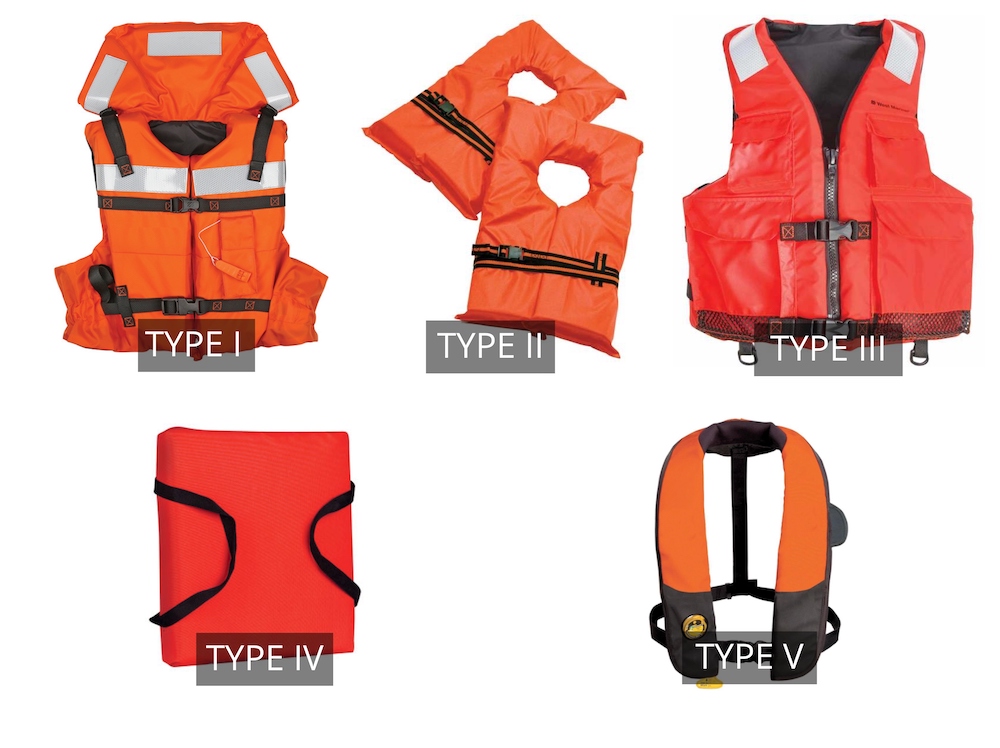
“Don’t forget the life jacket!” you’ve probably shouted (or had a family member shout at you) while boarding your boat. Arguably the most critical water safety device, life vests are essential for every lake homeowner. Federal Law requires all boats to be equipped with one wearable life jacket per passenger. The U.S. Coast Guard categorizes PFDs (Personal Flotation Devices) into five categories based on their function and buoyancy. While some are designed for boating in rough waters, others are made for calmer sports like canoeing. Most every type is available in standard (inherently buoyant), inflatable, and hybrid styles. Before focusing on choosing a life jacket style and cleaning and storing them, it’s important to understand these five basic life jacket classifications.
Offshore Life Jackets (Type I)
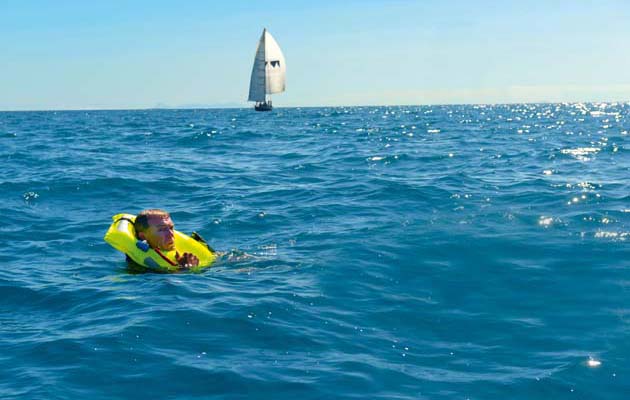
These are the biggest, bulkiest, and most buoyant of the group. This life jacket is suitable for all types of water, but it’s specifically helpful in rough, remote waters where rescue may be slow. Often too intense for recreational use, it’s mandatory for commercial vessels 40+ feet.
Minimum buoyancy: 22lbs (adults) 11lbs (kids)
Advantages: Extreme buoyancy. If an overboard passenger is unconscious, they’ll most certainly stay face-up in the water.
Disadvantages: Heavier and less comfortable due to excess flotation material.
Near Shore Vests (Type II)
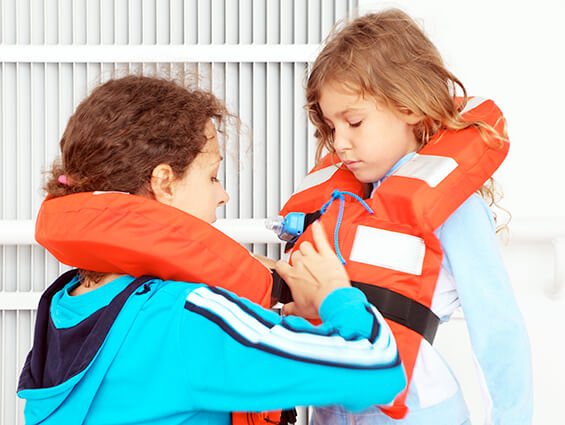
As the name suggests, Near Shore Vests are designed for use in calm waters that are relatively close to the shore. These would be appropriate for activities like fishing and sailing, where a nearby boat could provide rescue.
Minimum buoyancy: 15.5lbs (adults) 11lbs (children)
Advantages: More comfortable than type I and turn most wearers face-up in the water if unconscious. Simple, reliable design, and inexpensive.
Disadvantage: Compared to Type I, these life jackets are not as useful in a situation where rescue is unlikely. When unconscious, some wearers may not remain face up.
Flotation Aids (Type III)
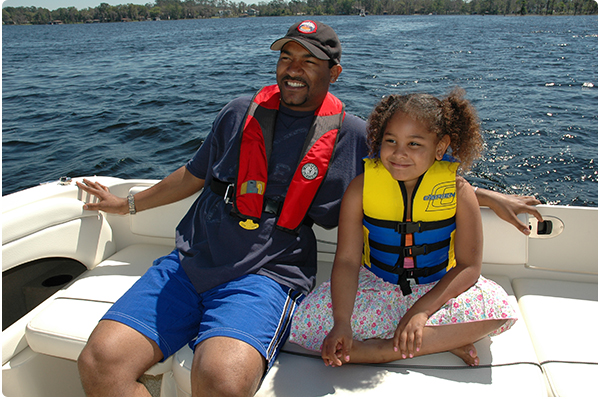
Similar to Type II, Flotation Aids are made for calm, inland waters. The difference is that flotation aids are specifically useful for watersports like fishing, waterskiing, and wakeboarding. Examples of this type of life jacket include float coats, fishing vests, and water sports vests.
Minimum buoyancy: 15.5lbs (adults) 11lbs (children)
Advantages: They offer a lot of free movement. Comfortable and come in lots of different styles.
Disadvantage: Won’t turn an unconscious wearer straight up.
Throwable Devices (Type IV)
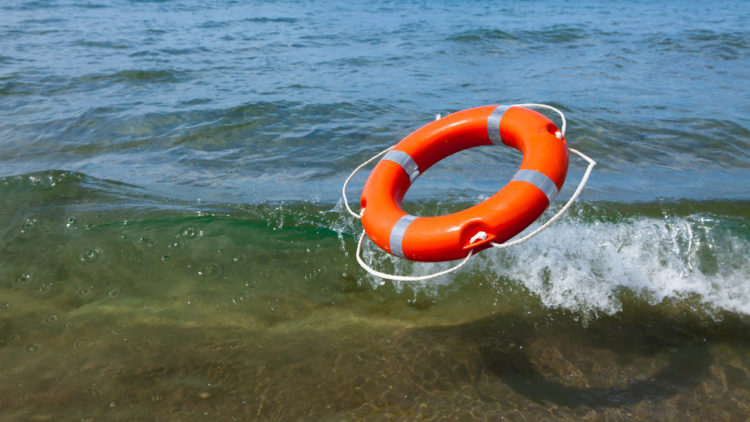
When a passenger falls overboard, throw a Type III life jacket their way. A device that is designed to be held rather than worn; this category includes ring buoys, horseshoe buoys, and floating cushions. Like types II and III, they are designed for calm waters with a good chance of quick rescue.
Minimum buoyancy: 16.5 lbs for a ring buoy or 18 lbs for boat cushion
Advantage: Can easily be thrown from a boat to the overboard passenger. They’re also easy to carry aboard a boat — just be sure not to use as a cushion as it degrades the foam.
Disadvantage: Not designed for children and non-swimmers. They also do not count as a “wearable vest” per federal regulations, and can only be used as backup support.
Special Use Devices (Type V)
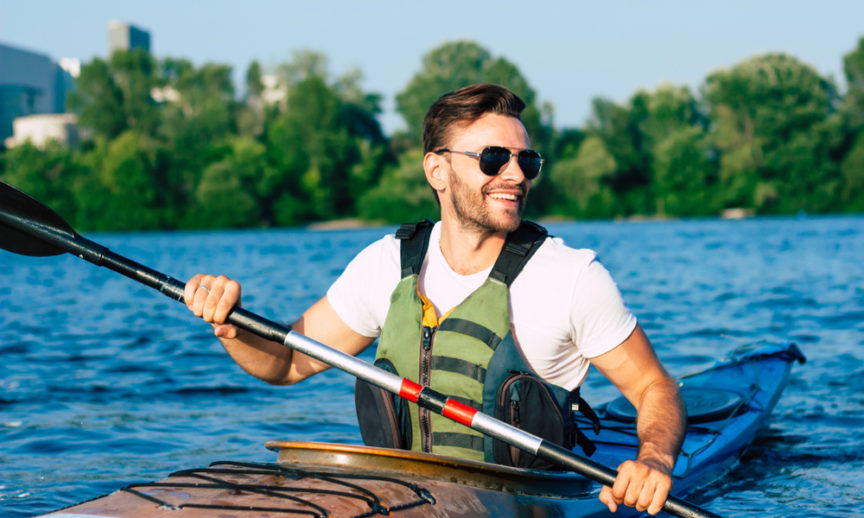
This final life jacket category includes vests for unique activities like sailing, kayaking, windsurfing, water skiing, white water rafting. Think of specialized uniforms like deck suits, work vests, and insulated jackets for cold waters.
Minimum buoyancy: 15.5lbs to 22lbs
Advantages: They’re uniquely tailored to your activity.
Disadvantages: They are not generalizable for all recreational use. They also require extra effort, as they must be worn when underway. You can’t just have them on board.
Grab the jacket that’s right for you, and stay safe on the water!

